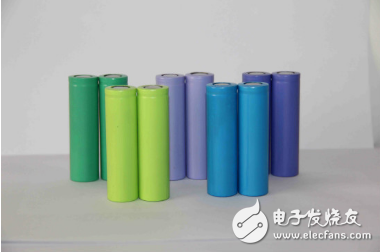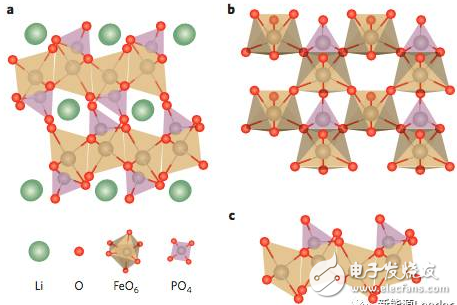As a high-efficiency energy storage component, lithium-ion batteries have been widely used in the field of consumer electronics. Lithium-ion batteries are available from mobile phones to notebook computers. Lithium-ion batteries have achieved such brilliant results thanks to their high energy storage density. And good security. With the continuous development of technology, the energy density and power density of lithium-ion batteries are also constantly increasing, and nanotechnology has made an indelible contribution. Speaking of the application of nanotechnology in lithium-ion batteries, Xiaobian first thought of LiFePO4. Due to poor conductivity, LiFePO4 was prepared into nanoparticles in order to improve its conductivity, which greatly improved the electricity of LiFePO4. Chemical properties. In addition, the silicon negative electrode is also a beneficiary of nanotechnology. The nano silicon particle can well suppress the volume expansion of Si in the process of lithium intercalation and improve the cycle performance of Si material. Jun Lu of the Argonne National Laboratory recently published an article in the journal Nature nanotechnology to summarize and review the application of nanotechnology in lithium-ion batteries.

1.LiFePO4 material
LiFePO4 material has attracted many people's attention because of its good thermal stability and low cost. However, due to the unique covalent bond structure inside LiFePO4 material, the electronic conductivity of LFP material is very low, thus limiting its high rate charge and discharge performance. To this end, LFP materials are made into nanoparticles and coated with materials such as conductive materials such as carbon, conductive polymers and metals. In addition, it has been found that by incorporating a high-valent metal cation into the nano-LFP particles by using a non-stoichiometric solid solution doping method, the electronic conductivity of the LFP nanoparticles can be increased by 108, so that the LFP material can be charged and discharged within 3 minutes. This is especially important for electric vehicles.
Figure a below shows the crystal structure of the LFP crystal in the (010) direction. The "PO6" octahedron in the crystal is connected by sharing the O atoms. This connection also leads to low electron conductivity of the material. In addition, another problem affecting the performance of LFP materials is the Fe occupancy problem. In the 1D direction, Li+ has a high diffusion coefficient, but part of Fe occupies the position of Li, which affects the diffusion speed of Li in the (001) direction. , resulting in large polarization of the material, poor rate performance.

2. inhibit the decomposition of LiMn2O4 material
The LMO material has a three-dimensional Li+ diffusion channel and therefore has a high ion diffusion coefficient, but Mn3+ is formed in a low SoC state. Due to the Jonh-Teller effect, the LMO structure is unstable, and some Mn elements are eluted into the electrolyte. And finally deposited on the surface of the negative electrode, destroying the structure of the SEI film. At present, a solution is to add some low-cost main group metal ions, such as Li, to the LMO to replace part of Mn, thereby increasing the valence state of Mn element at low SoC and reducing Mn3+. Another solution is to coat the surface of the LMO material particles with a layer of 10-20 nm thick oxides, fluorides such as ZrO2, TIO2 and SiO2.
3. Inhibition of NMC chemical activity
NMC materials, especially high nickel NMC materials, have a specific capacity of up to 200 mAh/g and have excellent cycle performance. However, in the state of charging, NMC material is very easy to oxidize the electrolyte. Therefore, in actual production, we do not want to make NMC materials into nanoparticles, but we can inhibit the chemical activity of NMC by means of nano-coating.
In order to inhibit the reactivity of high-nickel NMC materials with electrolytes, attempts have been made to coat the materials with nanoparticles to avoid direct contact between the material particles and the electrolyte, thus greatly improving the cycle life of the materials, as shown in the following figures a and b. Shown. Atomic layer deposition is also an important method to protect NMC materials. Studies have shown that 3 to 5 atomic layer depositions can obtain the best performance NMC materials. However, since the surface of the NMC material lacks an acidic functional group, it is difficult to perform atomic layer deposition efficiently. In addition, the core-shell structure of nanoparticles is also an effective method to reduce the reactivity. As shown in Figure 3d, the high Mn shell has good stability, but the capacity is low, the high nickel core capacity is high, but the reactivity is large, but this structure There is also a problem that the internal stress caused by the lattice mismatch affects the cycle performance of the material. Solving this problem can be achieved by the gradient concentration material. As shown in Fig. 3e, the concentration of Ni gradually decreases from the core to the outer casing. The material is capable of high reversible capacity above 200 mAh/g and has a cycle life of up to 1000 cycles.

From the perspective of improving customer experience, APM launches a new high power product-SP3U/6U series. SP3U/6U series integrates power supply and electronic load into one 3U unit. It is also a very powerful one. Only a button is needed to switch between the power supply and electronic load. It can be used not only as a stand-alone powerful power supply, as a source to provide power; but also as an electronic load, to absorb the consumed energy. It offers standard two-quadrants functionality. IT could provides 9 voltage ranges, up to 2250V, supports master-slave parallel with even current distribution up to 576kW. Built-in waveform generator supports generating arbitrary waveforms, and imports LIST files for waveforms via USB interface. SP3U/6U series is the combination of reliability, high efficient setting, safe and multiple measurement functions. SP3U/6U series is extensively used in aspects of high power battery, automotive electronics, green energy, high speed testing etc.
APM technologies product line includes Programmable Power Supplies. AC Power Supplies, DC Electronic Load, 3 Phase Source and High Power Dc System.
750V DC Power Supply,High Measurement accuracy power supply,SCPI commands web GUI power supply
APM Technologies Ltd , https://www.apmpowersupply.com